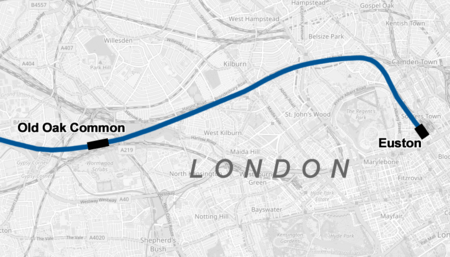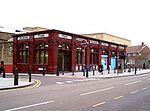Euston tunnel
High Speed 2Railway tunnels in LondonUse British English from August 2021

Euston tunnel is a tunnel currently planned in London that will carry the High Speed 2 (HS2) railway between Euston railway station and Old Oak Common railway station. Work to prepare the site for construction was undertaken in the late 2010s, such as the clearance of the old carriage sheds near Euston station in 2018. A legal challenge to the tunnel's design was defeated in mid-2020. During October 2020, HS2 Ltd ordered the two tunnel boring machines (TBMs) from Herrenknecht that will excavate the tunnel. Excavation is scheduled to take place between 2022 and 2024.
Excerpt from the Wikipedia article Euston tunnel (License: CC BY-SA 3.0, Authors, Images).Euston tunnel
Springfield Lane, London South Hampstead (London Borough of Camden)
Geographical coordinates (GPS) Address Nearby Places Show on map
Geographical coordinates (GPS)
| Latitude | Longitude |
|---|---|
| N 51.537 ° | E -0.192 ° |
Address
The Old Bell
Springfield Lane
NW6 5UA London, South Hampstead (London Borough of Camden)
England, United Kingdom
Open on Google Maps








